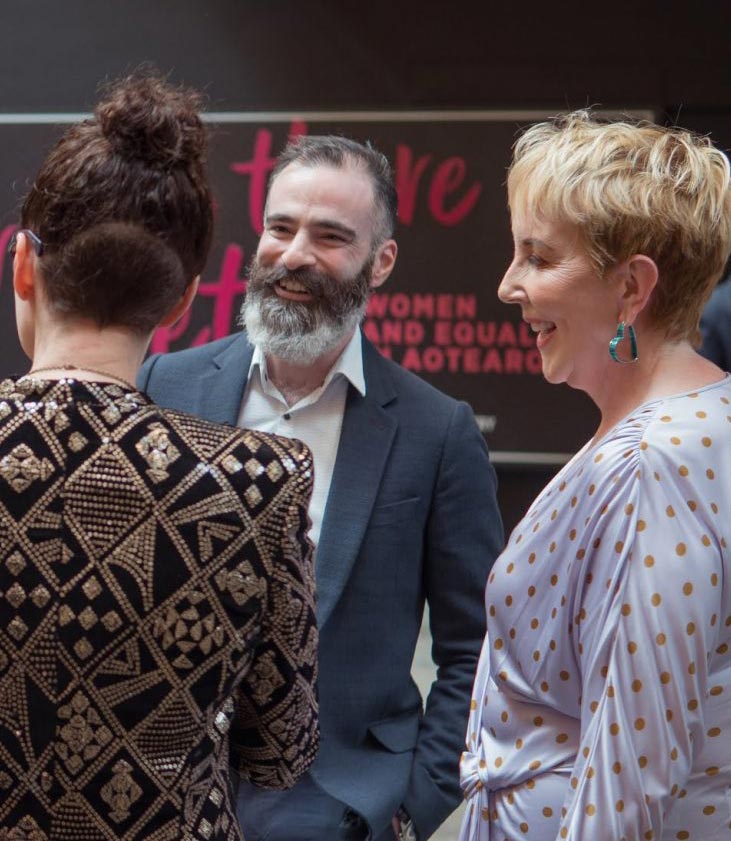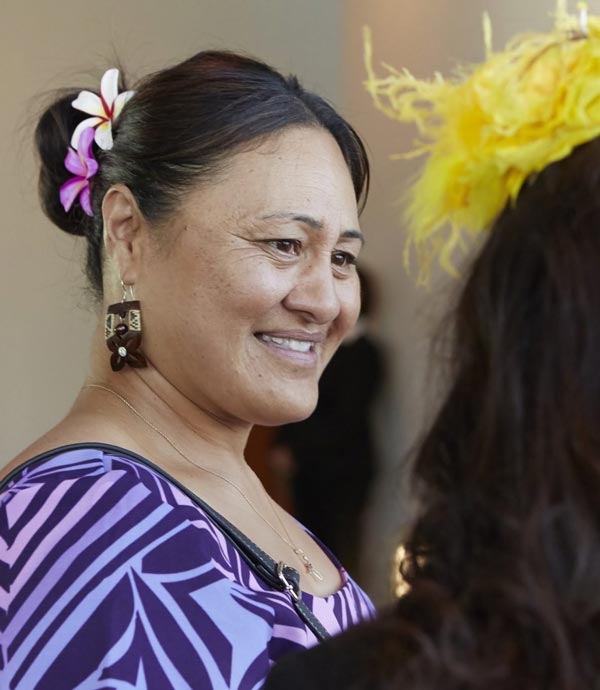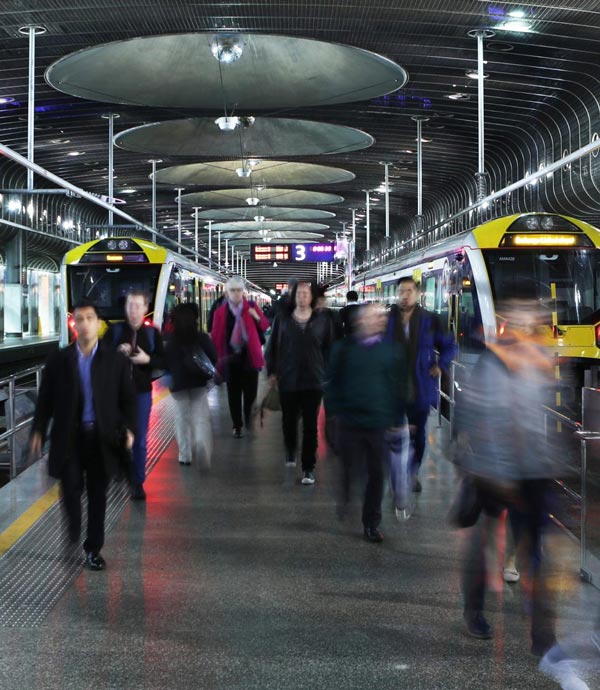To create an engaged and therefore productive workforce, employees need be able to bring their whole selves to work without feeling suppressed. EY New Zealand’s senior tax manager Gina Mills is pushing EY’s culture in this direction.
Gina Mills is serious about diversity. She had contemplated setting up LGBT initiatives in the past, linking in with EY efforts globally, but wondered if she had enough influence and ultimately felt the climate in New Zealand wasn’t quite ready.
But after winning the Global EY Chairman’s Values award 2014 for her efforts to improve team culture and engagement, it was the trip to London to pick up the gong that sparked her into action.
“I was inspired by the people I met there. I started to understand people saw me as a role model, and realised the influence I could have.”
She began her D&I journey championing the LGBT perspective. While her own experience of being out in the workplace has been positive – she and her partner have been openly out at work since joining EY – she worried that others didn’t feel they could easily be themselves and that there were no senior-level ‘out’ role models in the New Zealand firm. She wanted to right this.
Launch of a council
In March 2015 Mills conceived the idea of a D&I council for EY in New Zealand to cover a broad spectrum of diversity issues.
In order to launch the initiative, Mills felt the push needed to come from the top, so she asked EY New Zealand managing partner Simon O’Connor to send out internal communications announcing the launch, calling for interested people to be involved.
“It couldn’t be just four or five people sitting in a room talking about diversity. It needed to be taken up at all levels throughout the organisation,” says Mills.
By June it had launched and, in September, Mills was working with 30 engaged employees nationwide who went on to form five working groups. The focus of these groups reflected EY’s global D&I focus areas: gender, ethnicity, flexibility, LGBTI, and disability.
The working groups spent the last quarter of 2015 articulating the changes they wanted to make to EY in their focus areas, and devising how change would be measured.
Because involvement with D&I is a voluntary activity over and above their normal daily work, Mills says it is critical to allow each group to shape its own goals to achieve results which are meaningful to them.
Ethnicity
One initiative developed in the ethnicity working group is the option for employees to include in their email signature their name in their native language alongside the English version – for example, in Chinese or Russian script. Another initiative is, if employment law permits, for employees to be able to swap out a New Zealand public holiday for one from their culture; Diwali, for example.
“We’re trying to make people feel as if they don’t have to fit into a certain mould, and allow them to be themselves. It’s just about making people more aware and we’re really just formalising the efforts EY has already been making.”
The ethnicity group also works on Maori and Pacific inclusion, including specific initiatives with Maori and Pacific university students to encourage them to apply. EY’s dedicated Maori business unit, EY Tahi, also has a strong focus on inclusion and encouraging a better understanding of Maori culture in the business setting.
Gender
Perhaps the most advanced of all the groups, Mills says EY already has successful programmes working towards gender equality such as the “Accelerate” programme for high potential female employees, the “Entrepreneurial Winning Women” executive leadership workshops, and the “Women. Fast Forward” initiative, working towards gender parity. EY Oceania has announced gender targets including pay parity in like-for -like roles, and 30% female partners by 2020.
EY also holds a diverse range of networking events to appeal to a broader range of interests, including art, fashion and theatre, rather than the typical rugby, pub or golf outings which men may favour.
The D&I Council hopes to funnel these existing activities around gender into one strategy which can operate across the country.
Flexibility
Flexibility allows EY’s people to balance their work and home commitments and this helps create an inclusive working environment.
So far, the physical and technological changes are in place. In September, as part of changes rolled out globally, hot-desking (EY calls it Workplace of the Future) was introduced throughout the Auckland EY building. Everyone, aside from a handful of support people, uses temporary desks and can work remotely when they like. This could be at home or at a client site.
“People don’t necessarily need a fixed desk, particularly if they’re out with clients a lot of the time. And flexibility of seating provides the opportunity for client or project teams to sit together and collaborate easily.”
Mills says during the next few months, EY will work towards even more changes around flexibility, which includes working hours. The biggest change will be to focus on someone’s outputs rather than whether or not they are physically seen in the office. But she says there’s still a way to go before working flexibly becomes completely acceptable within the working culture.
“We need partners to lead this, to make it okay for everyone else. For example, when they’re going to their child’s sports practice, they need to be able to say it – instead of the usual ‘I’m off for a meeting’,
“We want to get away from the concept of asking for approval to do things more flexibly. If we trust our people to do their job and meet client expectations, we shouldn’t care when or where they get it done. At the outset, this may feel uncomfortable for some, so we aim to develop guidelines so it will feel more natural,” says Mills.
Globally, EY has a huge focus on flexibility. Of course there is the obvious benefit of reducing the office space rented, but EY thinks the real benefits are in allowing people to collaborate more easily and this freedom and flexibility creating loyalty and engagement in staff.
“Previously, you had to negotiate flexibility into your role but now it is something that everyone can access on almost any day of any week,” says Mills. “EY in Sydney is moving to a Workplace of the Future environment this year and some Asian and US offices have already done it. Flexibility at EY allows people to feel that their outside life is valued.”
Disability
Mills says this working group has had some challenges around finding a role model who identifies as disabled within EY.
“It is a particularly sensitive subject and one where professional services organisations can do better and be more accommodating.”
Plans include making sure graduate recruitment drives explicitly make disabled students feel welcome to join EY. A new “wellness” initiative is being also rolled out to support mental health and physical wellbeing at work.
Measurement of Change
Mills says surveys will be a primary tool to measure change. Already an annual D&I survey is run throughout Oceania (New Zealand, Australia and Fiji), asking employees for personal information such as ethnicity, education, and LGBT status on an anonymous basis.
For example, regarding LGBT, it asks, ‘If you identify as LGBT, are you out as LGBT at work?’ This is then compared with answers to the questions, “Are you proud to work at EY?” and “Do you think you contribution at EY is valued?” There is a clear correlation between those who are out at work and those who feel their contribution is valued, which Mills believes is evidence of why a strong and visible LGBT network at EY is so important.
The D&I Council will also be a key monitor of the unconscious bias that creeps into annual performance review, promotion discussions and recruitment decisions.
“We must call out poor decision making based on unconscious bias,” Mills says. “If we consciously don’t give challenging, high pressured work to someone who is working part time, have we asked that person whether they would like that opportunity rather than making the decision for them?
“Change, including people’s perceptions of change, will be gradual though and it is important not to get discouraged by any apparent lack of progress.”
Challenges?
• “Just sticking at it. Culture doesn’t change overnight; it changes in small incremental steps.”
• “Getting people to understand that this is a real business issue, not only for our employees but also for our clients who are getting serious about diversity and inclusion. Businesses who do not step up in this area will be left behind, and the best employees will move elsewhere.”
• “Getting stuff done – that is, finding time to deliver on what you said you would do, is quite a challenge when you also have a demanding day-to-day role in your job. The Australian EY office has fulltime roles for D&I overseeing Oceania.”
• Resistance – many people are anti-quotas, anti-special-treatment
• “Having all our people display the right behaviours all of the time.” One isolated negative incident can tarnish the whole EY experience for the individual affected.
Appetite for D&I within EY
At EY’s last Town Hall meeting, where general business matters are discussed by the organisation’s senior leadership partners, Mills noticed all the partners in discussion were white and male.
“In question time, I asked ‘What are we doing about getting more diversity on the table?’ and got an ‘Oooh!’ from the audience. It seemed I had mentioned the elephant in the room! The feedback I got from people afterwards was overwhelming, from both men and women, all ages and all backgrounds. I had touched a nerve. So people are clearly starting to care about the diversity issue.
“It is important to constantly agitate for minority voices to be heard and represented at the leadership table, and I’m excited about the steps EY is taking to ensure this will happen.”




